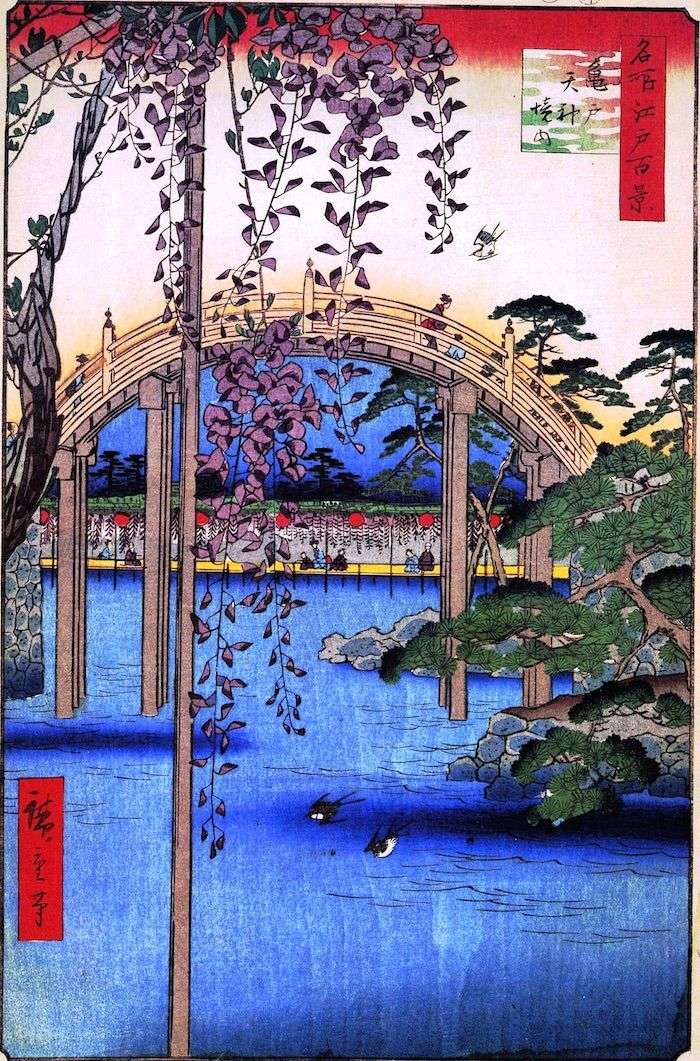
In 1646, the monk of Otorii Nobusuke cut out the image of Sugawara no Mitizane, from the sacred tree of the quinai plum and built a chapel in which he installed the statue in the village of Kameido. Thus, the beginning of the Sanctuary of Tenjin in Kamedo was laid. It was dedicated to Sugawara no Mitizane-the minister and poet of the Heian period, exiled to Kyushu, where he died, and deified after death, as the patron of scholars and students, and also as Thunder God. He was buried in the temple of Dadzaifu Tenman-gu, not far from Fukuoka, so the sanctuary of Tenjin is also called Eastern Dadzaifu.
The entire first plan of engraving is taken by Wistaria – a flower symbolizing summer. But most of all, these places were known for the flowering of wisteria. On the territory of the temple was a pond and two paired bridges, one stone, the other – wooden. Because of their shape, they learned the name of Tycho-bassi. Wooden was considered male, stone – female. Hiro-shige portrayed a wooden bridge – somewhat exaggerating its dimensions.
The color of the later version of the engraving acquires a more decorative character. The sky, the visible floor of a round bridge, is painted in a dark blue color, it does not match the color of the sky behind the bridge, as in the initial version. The dark blue bar at the top turns into red.
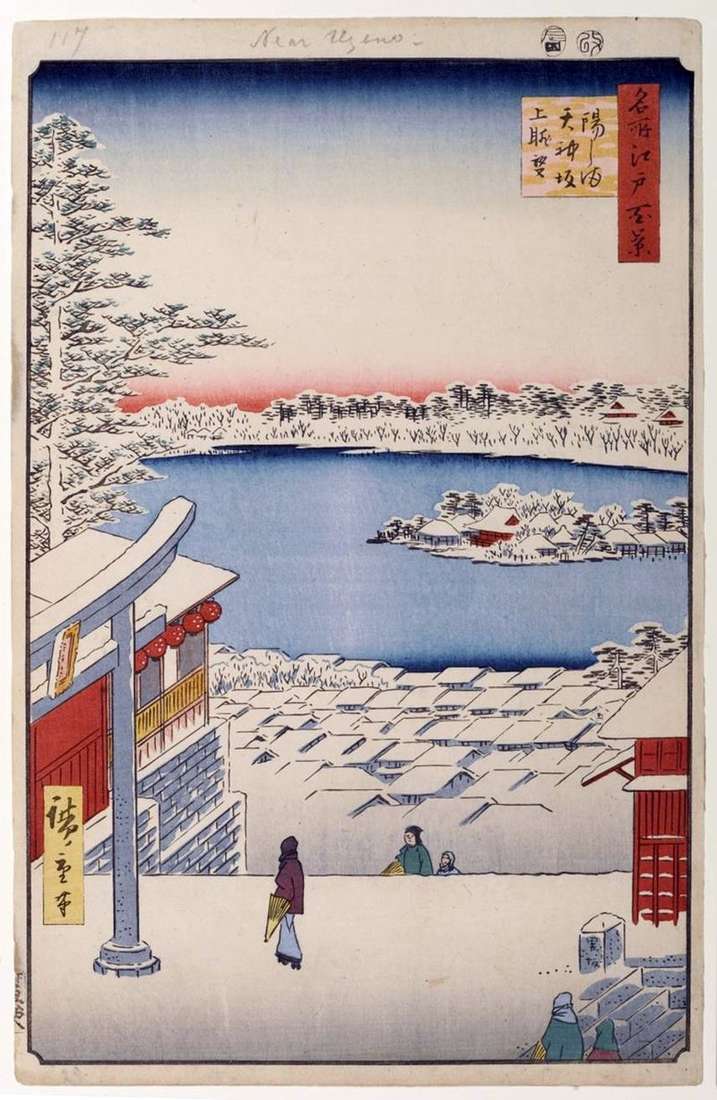 View from the hill of the sanctuary of Tenjin in Yusima by Utagawa Hiroshige
View from the hill of the sanctuary of Tenjin in Yusima by Utagawa Hiroshige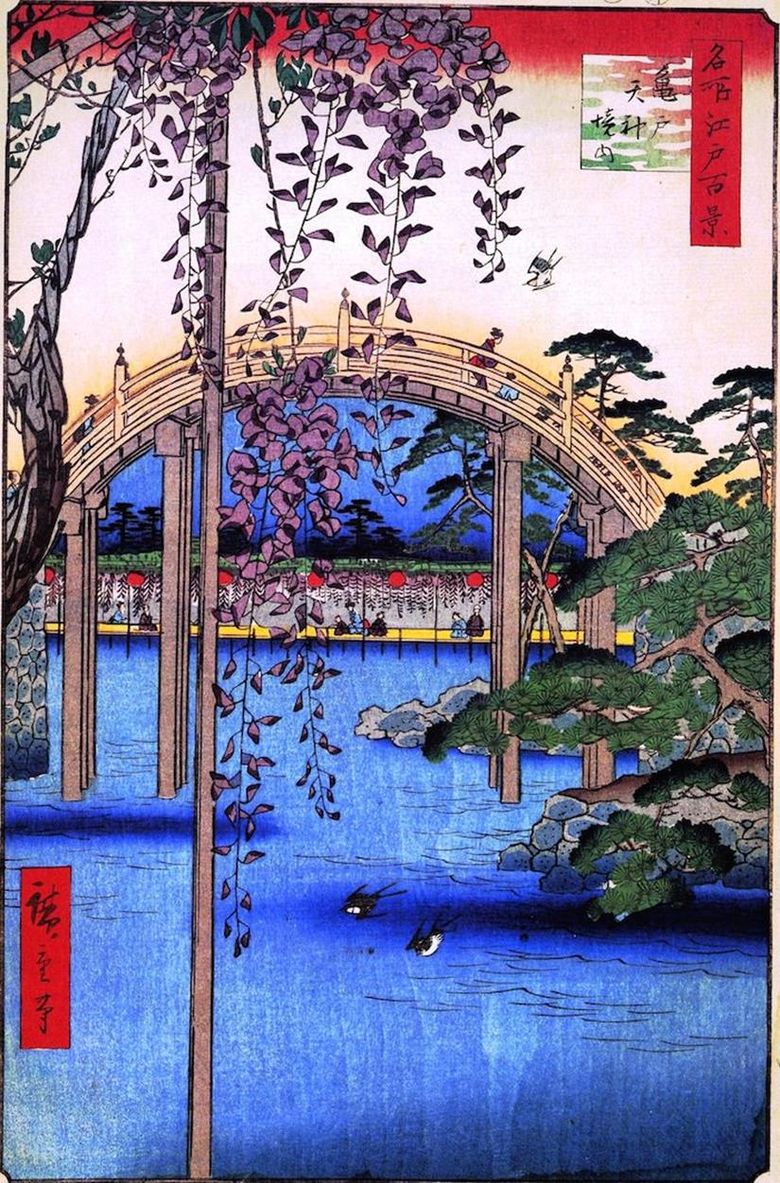 Territoire du sanctuaire Kameido Tenjin – Utagawa Hiroshige
Territoire du sanctuaire Kameido Tenjin – Utagawa Hiroshige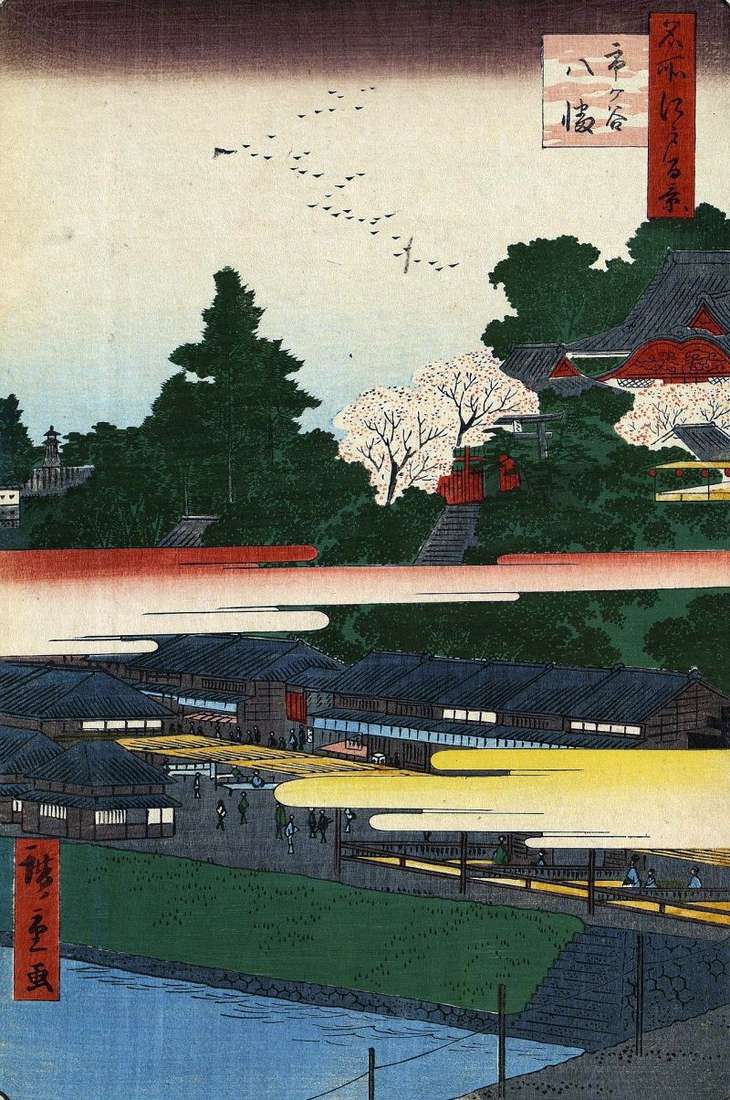 Hachiman sanctuary in Itigaya by Utagawa Hiroshige
Hachiman sanctuary in Itigaya by Utagawa Hiroshige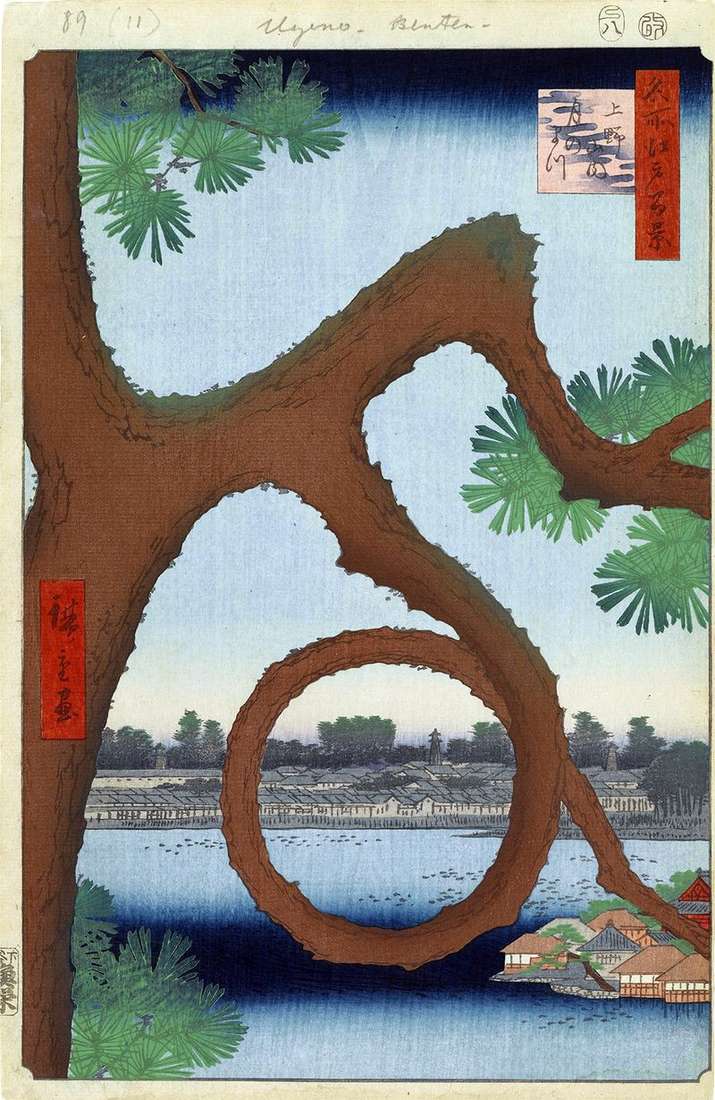 Moon pine on the territory of the monastery in Ueno by Utagawa Hiroshige
Moon pine on the territory of the monastery in Ueno by Utagawa Hiroshige Crossing Haneda, the sanctuary of Benten by Utagawa Hiroshige
Crossing Haneda, the sanctuary of Benten by Utagawa Hiroshige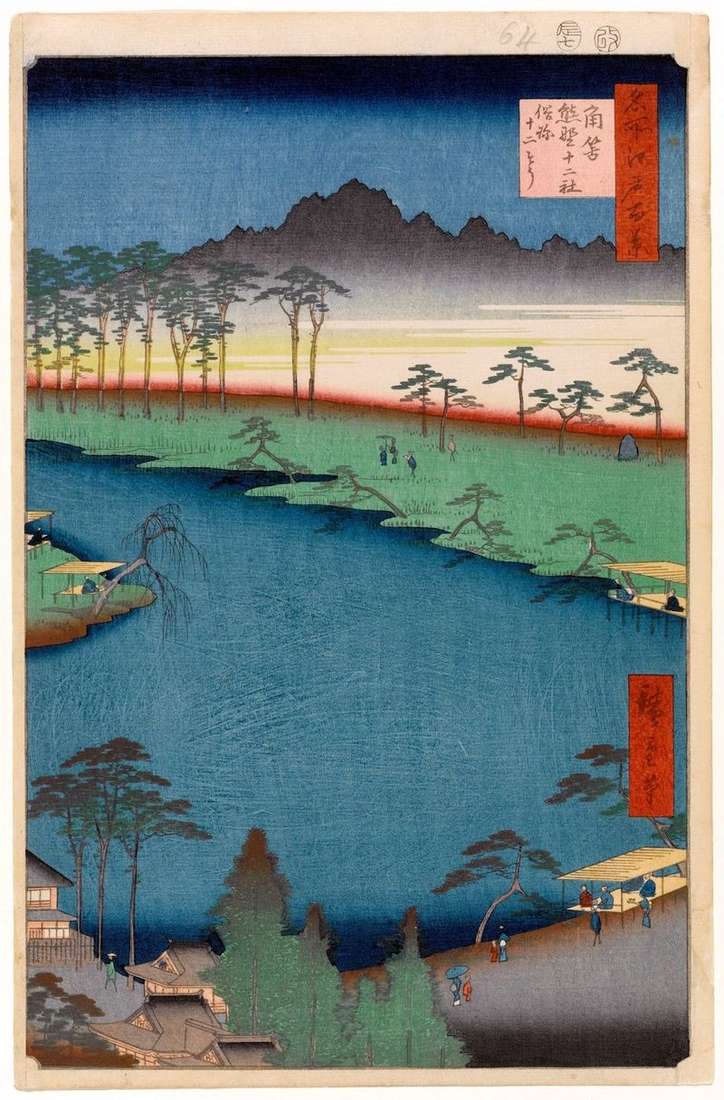 Sanctuary of Kumano Juni in Tsunahadzu by Utagawa Hiroshige
Sanctuary of Kumano Juni in Tsunahadzu by Utagawa Hiroshige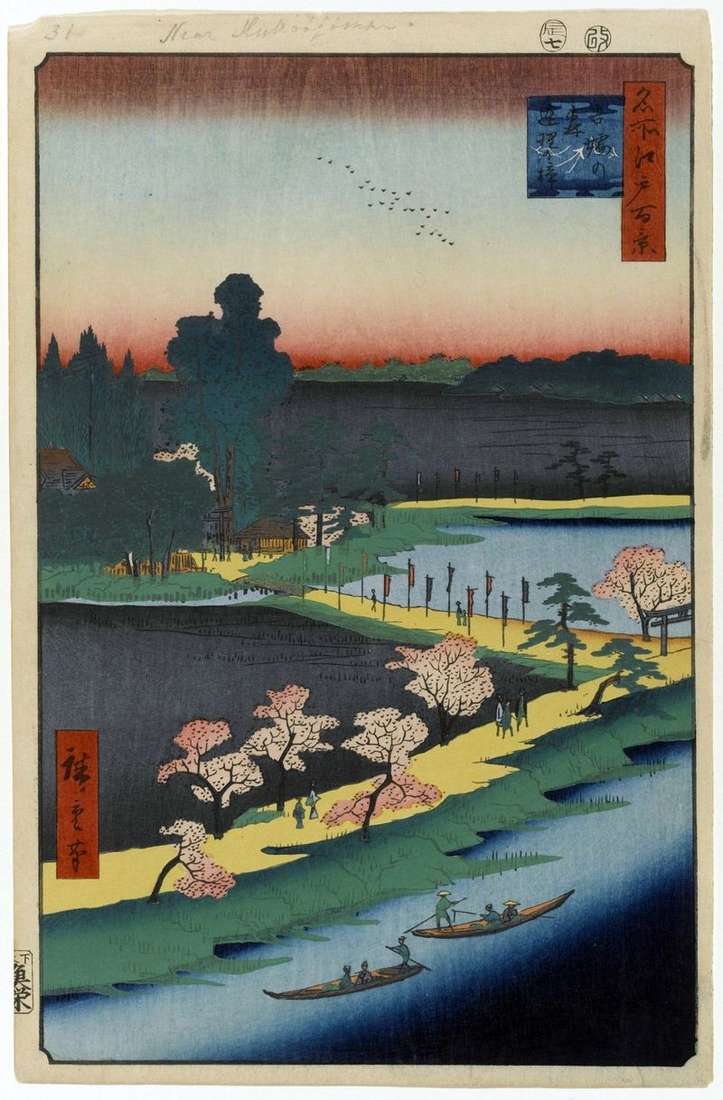 Agglomerated camphor trees at the sanctuary of Azuma-no Mori by Utagawa Hiroshige
Agglomerated camphor trees at the sanctuary of Azuma-no Mori by Utagawa Hiroshige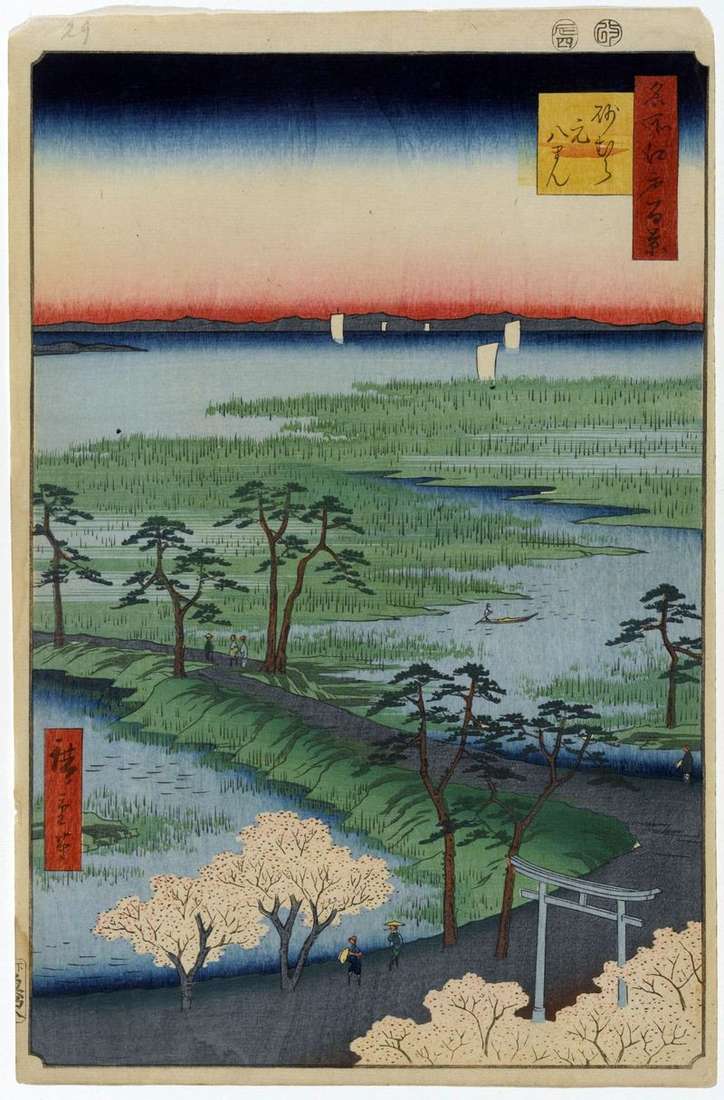 Sanctuary Motohatiman in Sunamura by Utagawa Hiroshige
Sanctuary Motohatiman in Sunamura by Utagawa Hiroshige